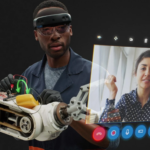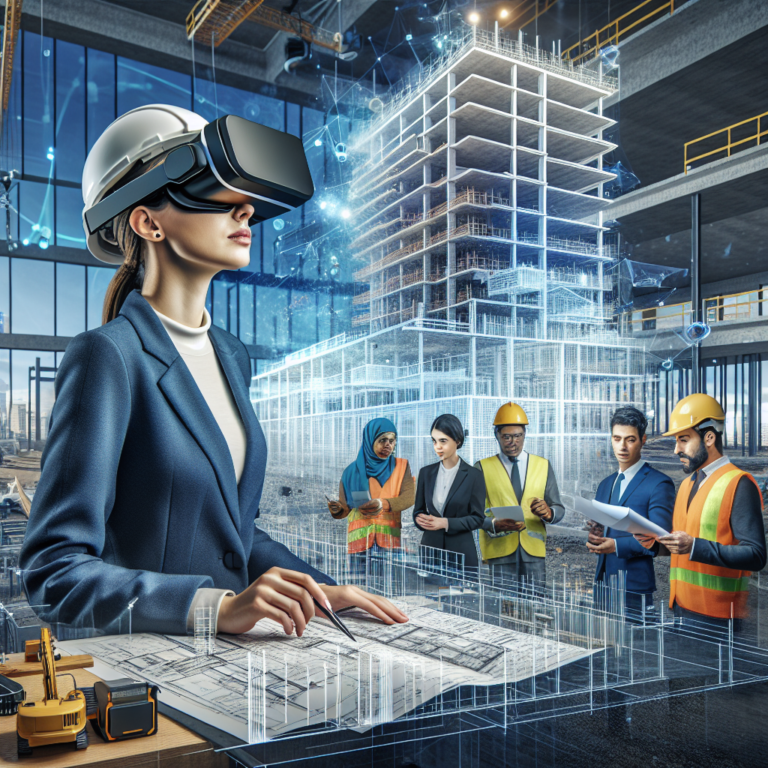Transforming the Construction Landscape: How Immersive Technologies Are Redefining Project Visualization
The New Era of Construction Visualization 🏗️
In the fast-paced world of construction, traditional methods of project planning and visualization are being challenged by innovative immersive technologies. As the industry embraces advancement, tools like Virtual Reality (VR), Augmented Reality (AR), and 3D modeling are helping teams to visualize ambitious projects before they break ground. These immersive technologies not only improve accuracy but also enhance Communication and collaboration among stakeholders. Let’s dive into how these groundbreaking tools are reshaping the construction industry.
What Are Immersive Technologies? 👓
Immersive technologies encompass a range of digital tools that create interactive and immersive experiences. These can be divided primarily into:
- Virtual Reality (VR): A fully immersive digital environment where users can experience a project as if they were physically present.
- Augmented Reality (AR): Adds a digital layer to the real world, allowing professionals to overlay virtual models onto physical spaces.
- 3D Modeling Software: Provides detailed architectural and structural models to help visualize a project from all angles.
Benefits of Using Immersive Technologies in Construction
With these tools, construction professionals can identify potential issues early on, enhance design accuracy, and ultimately save time and resources. Here are some of the key benefits:
1. Enhanced Visualization
Immersive technologies allow stakeholders to experience a project in a lifelike context. Instead of examining blueprints or 2D drawings:
- Project managers can walk through a 3D digital model.
- Clients can visualize the finished structure in its intended environment.
This level of interaction helps in making informed decisions and ensures everyone is on the same page.
2. Improved Collaboration
Teamwork is vital in construction. Immersive technologies like VR enable teams to collaborate more effectively:
- Architects, engineers, and project managers can enter the same virtual space to discuss designs.
- Real-time feedback can be implemented during design sessions, resulting in a more cohesive vision.
This interactive setup fosters a culture of teamwork and innovation.
3. Early Detection of Design Flaws
Visualizing a project in virtual space allows teams to spot potential problems before construction begins:
- Identifying design inconsistencies or code violations early can prevent costly delays.
- Teams can make adjustments and modifications on-the-fly, ensuring a smoother construction process.
Being proactive in this stage is critical for meeting deadlines and budgets.
4. Cost and Time Efficiency
Time is money, especially in the construction industry. Immersive technologies can lead to significant savings:
- Reducing the need for physical prototypes or mock-ups saves both time and material costs.
- Streamlined communication reduces the chances of rework and project delays.
Ultimately, this equips teams with the tools to manage their resources more effectively.
How Immersive Technologies Are Being Used in the Construction Industry 💼
These cutting-edge tools have already begun transforming various aspects of construction. Here are some practical applications:
1. Interactive Design Reviews
Rather than static presentations, teams can conduct interactive design reviews using VR and AR:
- Stakeholders can experience different design elements firsthand.
- Immediate feedback can facilitate brainstorm sessions, leading to better design choices.
2. Safety Training Simulations
Safety is paramount in construction. Immersive technologies can be used to enhance training:
- VR can simulate hazardous scenarios without any risk to workers.
- Workers can practice their responses in a controlled environment, improving their preparedness for real-life situations.
This proactive approach contributes to safer job sites.
3. Project Monitoring and Management
Once a project is underway, AR can help with real-time monitoring:
- Using AR, project managers can overlay construction plans onto the actual site.
- They can visually track progress, ensuring compliance with design specifications.
This ongoing oversight helps maintain project integrity.
4. Client Engagement and Presentations
Engaging clients early on can significantly improve satisfaction. Immersive technologies play a critical role:
- Clients can tour a virtual model of their future space, allowing for immediate feedback and adjustments.
- Presentations become more interactive, making it easier to garner trust and excitement about the project.
This enhanced communication builds strong relationships between contractors and clients.
Challenges and Considerations
While the benefits are substantial, integrating immersive technologies into construction is not without its challenges:
1. Initial Costs and Investment
The initial investment in immersive technology can be significant. Companies need to weigh the costs against potential long-term savings and benefits:
- Training staff can also require time and resources.
- Determining the right technology for specific projects can be daunting.
2. Technology Adoption and Resistance to Change
As with any new technology, there can be resistance to adoption within organizations:
- Staff may be hesitant to embrace unfamiliar tools.
- A learning curve can impede the integration process, requiring strong leadership and support.
Preparing your workforce for this transition is crucial for successful implementation.
The Future of Immersive Technologies in Construction
As immersive technologies continue to evolve, the construction landscape is set to change dramatically:
- Advancements in software and hardware will make these tools more accessible and cost-effective.
- Increased adoption will likely spur further innovation in project planning and design.
The horizon looks bright, as these technologies pave the way for safer, more efficient construction practices that prioritize collaboration and creativity. Embracing the future means not just visualizing goals but building them—virtually and beyond! 🌟




0 Comments